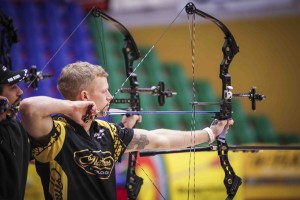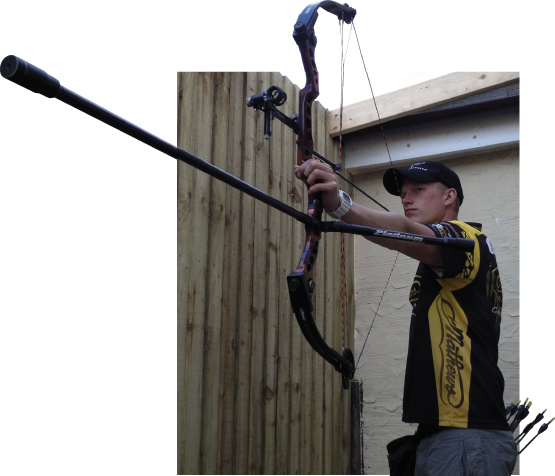There is now a huge array of articles and information out there about how to shoot a release aid correctly in order to avoid suffering from target panic or gold shyness. There is also a huge variety of different release aids out there which can help you to achieve the perfect shot, and many of them work great. However, the one that you choose to settle with will ultimately come down to what you find works best for you, but there are a few things that all release aids need to help them work perfectly.
The method that I choose to use in order to achieve this perfect, confident release is by using scapula motion to activate my release aid. What I mean by scapula motion is just that; I use the motion of my scapula to execute my release aid. No matter what type of release you use you can use this method to activate the trigger. What I do is pull my bow back using the release aid, then lay my thumb down onto the trigger – keeping it relaxed – at this point it does not set the release off. I then gently move my rear scapula towards my spine. This causes my hand to move back round on my face, which in turn sets the release off. What I have done by using the release this way is I have removed the conscious decision to set the release off and replaced it with a conscious decision to move my rear scapula towards my spine. My brain is now completely unaware of when the release is going to go off, so it allows me to just stare at the centre of the target while making this scapula motion, ultimately giving me a clean and trouble-free release.
I’ve found that this scapula motion is best learnt using a resistance style of release aid; this will teach you the correct method of shooting and get you to know how it should feel. It is my opinion that you would want an increase of around 3lbs on your holding weight to set the release off to begin with, but this may vary greatly for different people. You might also find it varies as you become more confident in the technique. However, even if you learn on a resistance type of release aid there’s no reason why you can’t then use it on another type just as successfully. The same technique can be easily achieved with a hinge-type release or a trigger.
In my experience of coaching archers, I find that 99 per cent of them are able to do this technique almost perfectly within an hour of coaching when aiming is taken out of the picture. The actual technique of pulling through the shot is quite easy to master when there is no target in front of you, and all your focus can be on what your back is doing. As soon as aiming is added into the equation, many people begin to freeze up, and tend to worry more about their aiming and not enough about the pulling. When this happens, ultimately they run out of energy and end up shaking badly or punching the shot off. I would recommend that you try and develop this new style of releasing on a blank target for the first few days, until it starts to feel more natural.
Once you feel you have the technique working reasonably well, you should introduce aiming to the shot. Start off close up, maybe just five yards, with a big face on the target. Get used to seeing your dot holding in the gold and executing the shot. Then gradually, as the days progress, keep moving further and further back. As you slowly build up this practice to full distance, you should keep your confidence in the technique you have learnt.
Keep practising!
Another key to gaining success in this is to keep score. For example, put a FITA 18m face up and shoot the arrows from three yards away. You should be able to shoot a near-perfect round, or even hit 600 out of 600, almost straight away.
Once you can clean it at three yards, move back to five yards, and them move back further when you can shoot a perfect score at that distance. This method should help to develop your confidence in your technique by reassuring your that you can both aim and execute a perfect shot in the gold, and get you prepared for shooting massive scores.
If you find you do run into problems with keeping your confidence in the shot while you aim, go back to shooting blank boss for a while. This should reassure you that you can still execute a strong shot using scapula motion, without worrying about where the arrow lands.



